Most people wish to learn more about their lymph nodes when they notice a change in size. At times your doctor may even say he notes your lymph nodes swollen. This usually is significant in infections.
The lymph system has often been put in second place to the circulatory system. But if you are reading this article it is because you have become aware of the importance of the lymph nodes and the lymph system.
The location of the lymph nodes is important in knowing if there is infection or cancer in the body. The lymph system is certainly easier to understand if you have an understanding of what your circulatory system is. (6)
But that is not to say that they cannot stand separately. In this article, you will find answers to the questions such as:
- What is the lymph system?
- Where are the lymph nodes located and how can I find them in my body?
Be aware that this article is for information purposes only. If you note a difference in size or shape in any of the areas noted in the article bellow it is suggested that you advise your medical professional as soon as possible.
What is the Lymph system and What does it do?
1. It is a one-way flow which brings lymph fluid to the cardiovascular system. Lymph fluid is full of toxic byproducts and needs to be eliminated from the body through the kidney, colon, skin, lungs, and liver and is brought there through the lymph system. (7)
2. It is necessary for body fluid homeostasis (keeping it at the norm), fat absorption, and immune response. (1)
3. It is the key when interstitial swelling or edema is noted. They lymph system is what helps to decrease this swelling and push the fluid into the circulatory system for elimination.
4. The system, in short, has vessels, organs, lymphoid tissue, lymph nodes and lymph fluid.
- Lymphatic fluid: Not only contains toxins and cellular waste but also oxygen, nutrients, hormones, and fatty acids.
- Lymphatic vessels: the method of transport for lymphatic fluid, and the method of dumping fluid into the circulatory system.
- Lymph nodes: These are where the lymph fluid is regulated or filtered. It is where pathogens are eradicated and broken down. (1) This is why during infection they are swollen. This work process causes inflammation in the lymph nodes.
- They are scattered over the whole body in cluster type formations. Although they are scattered they do have a pattern.
- Your body has 600-700 lymph nodes.
- Lymph nodes contain a cortex and medulla. They are basically little filters throughout your body which also harbor white blood cells until they are mature and able to fight against invasions on the body by infections. The image bellow demonstrates the complexity of a lymph node.
The image shows the parts of the Lymph node including the Afferent and efferent lymphatic vessels which are where the lymph fluid enters and exits the lymph node.
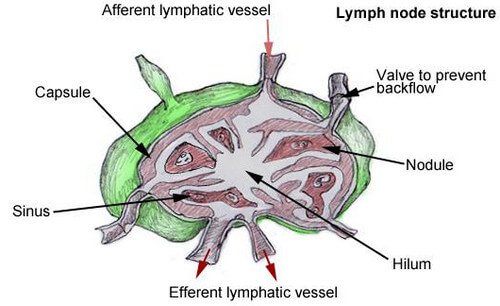
Picture 1: Lymph node including the Afferent and efferent lymphatic vessels
Image Source: img.medscapestatic.com
Organs
The lymph nodes are considered as lymph organs but there are other organs involved in the system that should also be noted.
- Spleen: Also eradicates pathogens and helps to monitor blood components and the immunologic response.
- Thymus: Where T-lymphocytes mature and develop. T-lymphocytes are essential white blood cells in the immune system.
Lymph System functions:
- Absorb elements from the digestive system such as fats and fat-soluble vitamins and transfer them to the blood stream. (7)
- Restore the fluid balance in the blood stream. By transporting extravagated cells, plasma macromolecules from tissues and placing them back into the circulatory system to be filtered. (1)
- Place a defense in the body against foreign organisms. (7)
The lymph fluid is not pumped through the lymph nodes and vessels by the heart as in the circulatory system. Instead, muscle contraction helps to move the fluid. The lymph vessels have one-way valves so when pressure is applied the fluid can only move in one direction. (3)
This image helps you to visualize what is considered one-way valves.

Picture 2: One-way valves.
Image Source: img.medscapestatic.com
What is some common terminology used when discussing the lymph nodes?
- Initial lymphatics – These are the smallest vessels involved in receiving fluids from tissues in the body.
- Pre-collecting lymphatics – these vessels contain smooth muscle and are able to contract on their own. They connect the collecting vessels to the capillaries.
- Collecting lymphatics – These do not have the one-way valves and is very similar in structure to blood vessels.
This image can help you see how the fluid can flow throughout the lymph vessels.
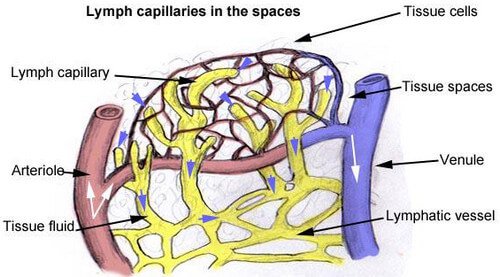
Image 3: How the fluid can flow throughout the lymph vessels.
Image Source: img.medscapestatic.com
Diseases and Disorders associated with the Lymphatic system
- Lymphedema – edema or accumulation of fluid in the tissues caused by the lymphatic system not draining correctly.
- Primary- inherited
- Secondary- due to other causes.
- Lymphoma– Cancer found in the lymphatic system.
- Lymphadenopathy – Swollen lymph nodes because of infection.
- Lymphadenitis – Swelling in the lymph nodes because of bacterial infection.
- Filariasis– When the lymphatic system is compromised by parasitic infection.
- Splenomegaly – Swelling or inflamed spleen due to viral infections.
- Tonsillitis – Swelling and infection in the tonsils. (7)
Locations of the Lymph nodes and how can you find them?
If the lymph nodes are swollen or inflamed you can feel them upon palpitation (light touching with pressure).
In this image, you can see the areas where clusters of lymph nodes are in the body. Not all lymph nodes can be felt upon palpitation unless they are inflamed. These clusters of lymph nodes are considered as:

Picture : Lymphatic system – Location of various lymph nodes
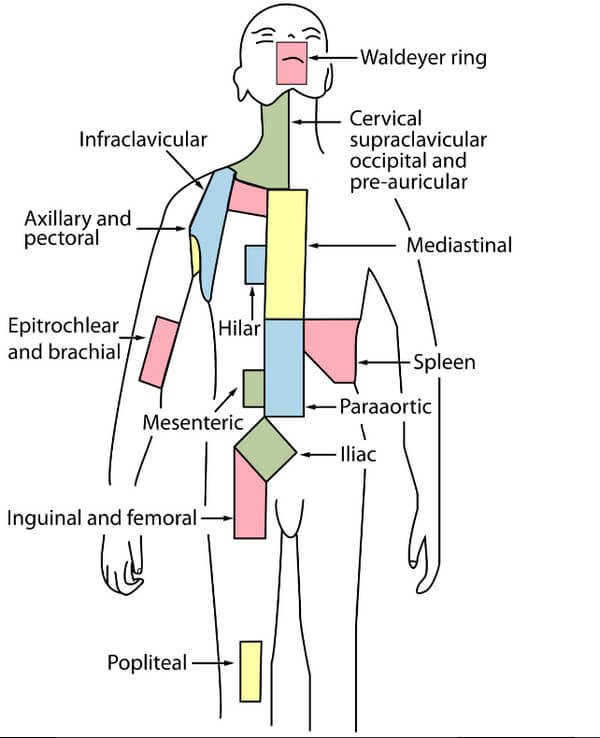
Picture : Location of Lymph Node Regions in neck and body
1. Cervical, Axillary and Inguinal
- often easy to palpate even when not swollen or inflamed.
 Picture : Axillary lymph nodes location and groups
Picture : Axillary lymph nodes location and groups

Picture : Axillary lymph node location (surface marking) skin
Picture : Cervical lymph nodes (Neck) classification – groups
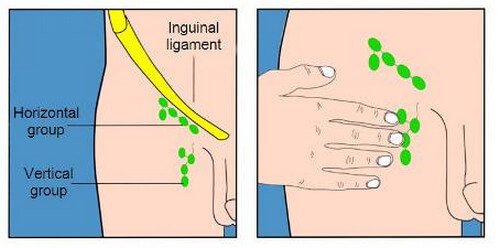
Picture : Inguinal lymph nodes (Horizontal and vertical groups)
2. Superclavicular, supratrochlear, mesenteric, popliteal, and iliac
- Usually only felt when swollen or inflamed.
3. Thoracic, Lumbar, Mediastinal
- only viewed with imaging.
All can be seen clearly with imaging.
This image makes very clear the auxiliary lymph nodes and ducts which may become inflamed.
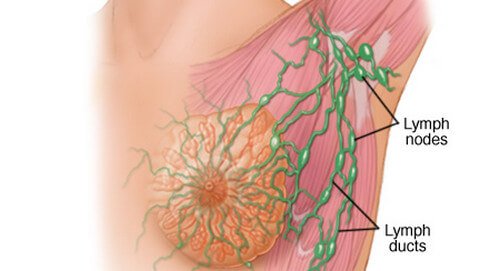
Photo 4: Auxiliary lymph nodes and ducts which may become inflamed.
Image Source: mayoclinic.org
Imaging and Diagnosis
- Lymphography– Is the same as an angiography but the contrast must be injected in the correct area of the circulatory system in order to show the lymph system.
- Lymphoscintigraphy– Uses radioactive tracer and a scintillation camera to show the flow of lymphatic fluid through the system. This method does usually have a poor resolution and for this reason, is not readily used.
- MRI-(Magnetic resonance lymphography) – Non-invasive but uses contrast to cause a relaxation time.
- PET/CT-Uses a tracer and is used to look for metastatic colonies.
- CEUS (contrast-enhanced ultrasound) – Uses microbubbles or gaseous cores in lipid or polymer shells to increase visualization of the lymph nodes.
- NIR (near-infrared fluorescence imaging) – Based on light reflection from the tissue.
- New ways of imaging are being offered such as: OCT/OFDI (optical frequency domain imaging) – Also based on light reflection or scattering. It is also used for vascular mapping. (5)
This image reflects how clearly the lymph system can be seen with new technologies

Picture 5: Lymph system can be seen with new technologies
Image Source: ncbi.nlm.nih.gov
References:
- http://www.ncbi.nlm.nih.gov/pmc/articles/PMC2755610/
- http://www.ncbi.nlm.nih.gov/pmc/articles/PMC3926219/
- http://www.ncbi.nlm.nih.gov/pmc/articles/PMC3284143/
- http://www.ncbi.nlm.nih.gov/pmc/articles/PMC4095806/
- http://www.ncbi.nlm.nih.gov/pmc/articles/PMC4268344/
- http://www.ncbi.nlm.nih.gov/pmc/articles/PMC3312397/
- http://emedicine.medscape.com/article/1899053-overview
- http://www.ncbi.nlm.nih.gov/pmc/articles/PMC4170987/
- http://www.mayoclinic.org/diseases-conditions/swollen-lymph-nodes/basics/symptoms/con-20029652

